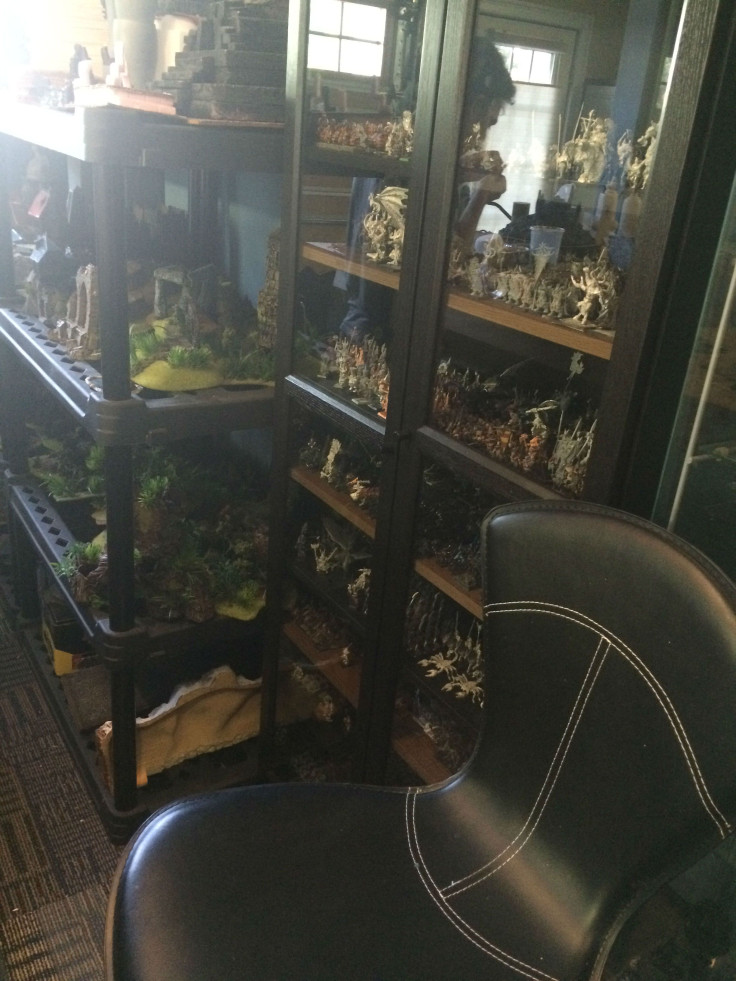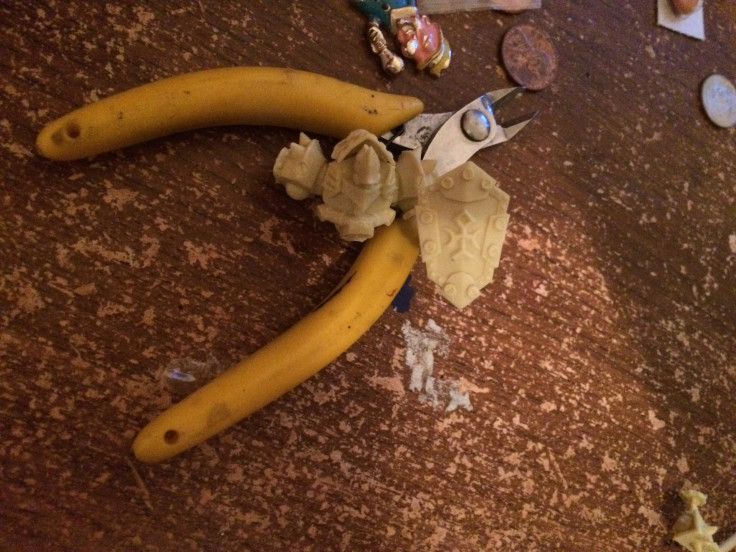When I was in high school, I loved miniature wargaming. There’s something about taking little pieces of plastic and metal, gluing them together and imagining an epic battle right before your eyes. All the epic destruction and true horror of actual combat, turned into dice rolls and tape measurements.
Warhammer was always my game of choice, a fantasy tabletop game that takes Tolkien’s fantasy tropes and brings them into a world of unstable magic, powerful chaos and over the top characters. I started getting interested around the sixth edition, playing the game every weekend with my friend Matt for about five years. We would laugh when our generals got blown up by their own lightning bolts, cry when our warmachines broke down and scream when the dice gods just weren’t in our favor.
There’s something magical about staring at a wooden plank covered in green sawdust to look like grass, with polystyrene mountains and resin rivers. To us, the world we created and the battles we fought might have been fake, but they were real to us.
Over the years, Matt and I played fewer games. I went away to college, leaving his garage filled with terrain and thousands of dollars of miniatures behind. We’d play once a month, then a couple of times a year. When Games Workshop released their newest version of Warhammer called Age of Sigmar in 2015, we stopped playing entirely. We had played through every ridiculous rule changes, broken armies and the Demons of Chaos , but this was to much. GW changed the entire game around, changing every model’s base, size and rules. Without our game, we had no reason to play.
I started to miss the smell of plastic glue melting pieces together, spending hours meticulously painting one model’s eyes so that he didn’t look cross-eyed and even supergluing my fingers together. Modeling was in my blood, and not being able to play with my toy soldiers was starting to get me down.

To get my fix, I started looking around at other miniature companies and the games they made. Malifaux was too complicated and Mantic Games’ Kings Of War didn’t excite me. I eventually stumbled on another company called Privateer Press and their Warmachine and Hordes game. Unlike Warhammer you only need a few models to play, so I thought it would be great to get back into the hobby I used to love.
I can’t play WarmaHordes by myself, so that meant I needed to get Matt to invest into this game with me. Matt is a Games Workshop fanatic, so getting him to try another company's game wasn’t easy. I tried to get him to accept the fact the Games Workshop he grew up with doesn’t exist anymore: the days of gorgeous John Blanche art and affordable models are gone.
Privateer Press was gracious enough to send iDigitalTimes everything two people need to get started in their game: two Battlegroups (their new brand new starter sets), some paints, brushes and superglue. I picked Protectorate of Menoth of Menoth, a group of religious zealots who use giant robots and fire to cleanse their victims, while Matt chose Skorne, an Asian inspired army that uses Hulking elephant beasts to do their bidding.
Each Battlegroup contains three to four models, just enough to play a game with. My Protectorate force had three Warjacks (steampunk robots) and a warcaster named Malekus, The Burning Truth, whose job was to keep them running. They are all made of plastic, with high levels of detail throughout. The mold lines were easily removable, but building them wasn’t easy.
PP gives you a ton of stuff in the actual Battlegroup box: the rules, backstory for your army, a ruler, a playing mat, but doesn't give you instructions how to build your models. I had no idea how to put my Warjacks together; I’d end up gluing a tube to one of their backs, only to notice that it was supposed to go somewhere else. Malekus was even harder to build, with random chains and wires not fitting seamlessly together. It might just be that I’m bad at building, because I still haven’t been able to get his chains to look exactly right.

Matt had the same problems with his Skorne. All of his models had whips that needed to fit perfectly, which isn’t easy to do. The superglue took forever to harden, so we switched over to Gorilla Glue. After a few hours of jiggling plastic and gluing our fingers together, we managed to get all of the models built. That meant it was actually time to try the game.
Warmachine and Hordes are two different games, but they can be played together. Hordes monsters can go berserk if they aren’t kept in check and Warmachines robots can’t do anything unless they are being controlled; those are the jobs of the Warlocks and the Warcasters. Each player takes turns having their behemoths beat the snot out of each other until one side is left standing.

Matt had created a miniature desert for us to play on, covered in palm trees, mountain cliffs and an oasis. It would be an epic field to have our two armies clash on. We set up our forces, with dice and measuring tape at the ready. Our models took to the field, punching each other in glorious combat. On turn three, my Castigator, a heavy warjack with a fire aura, let loose a massive flame wave that destroyed Matt’s Warlock. After that the game devolved into chaos and I managed to take the win.
If you haven’t played with or built miniatures though, I’d skip buying a Battlegroup box first. For someone new to modeling, they could be difficult to build. Privateer Press does have a two-player starter set that might be a better choice.
Warmachine and Hordes may never fill the place in my heart that sixth edition Warhammer left, but are still really fun games. I haven’t picked up a paintbrush in years, but I’m excited to start painting my brand new army.


















